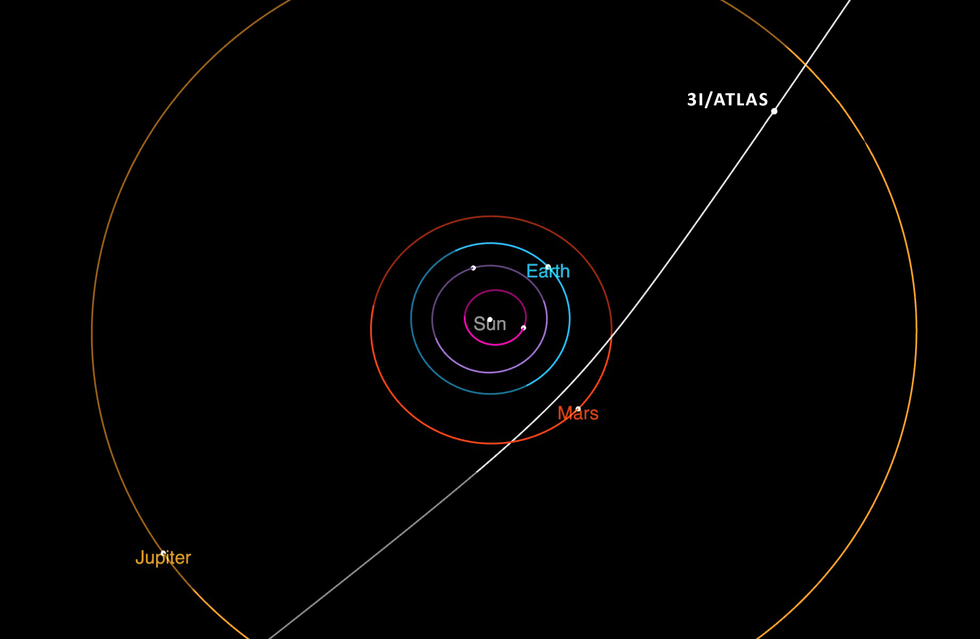Astronomers pick up radio signal from mysterious interstellar visitor speeding towards Earth

3I/ATLAS has baffled astronomers since it was first picked up last year
Don't Miss
Most Read
Astronomers have detected radio emissions from a mysterious celestial object for the first time as it travels through our Solar System.
The South African MeerKAT radio telescope successfully captured absorption signatures from hydroxyl molecules surrounding the unknown object, known as 3I/ATLAS, on October 24.
Harvard professor Avi Loeb, who has been investigating 3I/ATLAS since summer, explained: "These molecules leave a distinct radio signature that telescopes like MeerKAT can pick up."
The breakthrough follows unsuccessful attempts to identify these signals on September 20 and 28.
The third confirmed interstellar visitor to our Solar System, 3I/ATLAS was initially discovered on July 1 by the Asteroid Terrestrial Last Alert System.
Analysis revealed the hydroxyl molecules were travelling at approximately 61 miles per second in relation to Earth.
The absorption line widths corresponded with anticipated thermal movement of molecules at the object's surface temperature.
This successful detection occurred shortly after 3I/ATLAS crossed close to Earth's orbital plane, improving observational conditions.

Interstellar Comet 3I/ATLAS was first captured by the Gemini Multi-Object Spectrograph
|WIKICOMMONS
Images captured on November 9 show the object releasing vast streams of material in both solar-facing and opposite directions.
These jets extend almost 600,000 miles towards the sun and around 1.8 million miles away from it, spanning distances comparable to the sun's diameter as viewed from Earth.
The object currently sits 203 million miles from Earth, with these measurements providing the first definitive calculations of 3I/ATLAS's immense activity scale.
"Given that the anti-tail jets are only stopped at about 620,000 miles, their ram pressure exceeds that of the solar wind by a factor of a million," Professor Loeb observed.
LATEST DEVELOPMENTS

The rough path of 3I/ATLAS captured by the Gemini Multi-Object Spectrograph
|NASA
Solar wind typically moves at around 250 miles per second, roughly one thousand times quicker than expected outflow velocities from natural comets.
"This implies a mass flux of about 2.2 million pounds per second per million-square-mile section of the jet, adding up to a mass loss of 50 billion tons per month," Loeb stated.
When accounting for the complete jet area, the total expelled mass rivals 3I/ATLAS's minimum mass estimate.
"Assuming a solid density of 0.5 grams per cubic centimeter, the object must be at least three miles across, and if most of its nucleus survived perihelion, it could be six miles or larger," Loeb calculated.
The scale dwarfs the renowned interstellar object 'Oumuamua, which measured merely several hundred feet.
"The numbers are challenging for a natural comet explanation," Loeb remarked.
"The required mass loss, the rapid perihelion brightening, and the size all point to anomalies."
Space telescopes including Hubble and Webb will conduct spectroscopic observations as 3I/ATLAS reaches its nearest point to Earth on December 19.
The Juno spacecraft will investigate the object on March 16, 2026, searching for low-frequency radio emissions.











